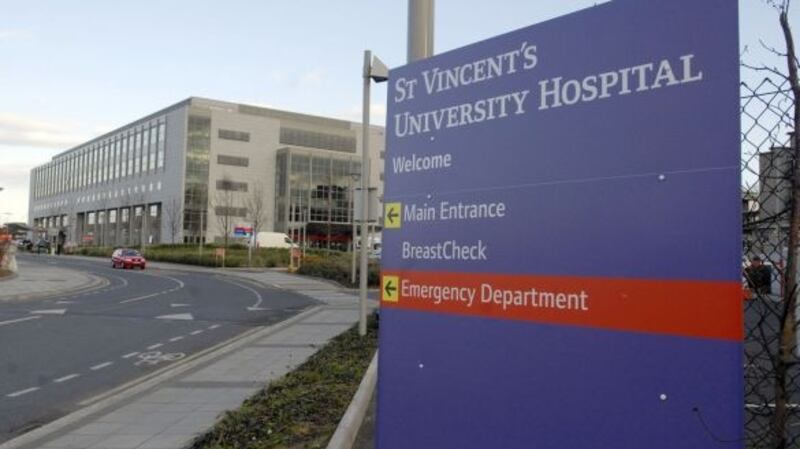Somewhere in Ireland today a woman will learn that she has cervical cancer. Two women will probably die from it this week. The names of those who have bequeathed their ferocious honesty and pleas to get tested are embedded in us. Last week gave us the indelible image of Patricia Carrick, too ill to attend court to hear the HSE admit it had failed her by misreading her smear test.
Yet on RTÉ’s Liveline her husband, Damien, interspersed a heartbreaking conversation about her with pleas to women to avail of smear tests.
No one can plead ignorance about this cancer.
The good news is that after a four-month hiatus during which authorities were accused of putting the reopening of Woodies and McDonalds ahead of a vital public service, cervical smear tests became available again in early July.
It makes no sense that nearly nine out of 10 adults are more frightened of the infinitesimal risk of catching Covid-19 in a consulting room than of cervical cancer
The bad news is that out of 110,000 smear test invitations dispatched in those summer months, only 12,000 women responded. “There is a lot of fear out there,” said CervicalCheck’s clinical director, Dr Nóirín Russell, at Saturday’s IHCA conference, adding that the same problem applied across all areas of healthcare. “People are afraid to interact with healthcare and to come into healthcare settings because of fear of Covid-19...”.
It makes no sense that nearly nine out of 10 adults are more frightened of the infinitesimal risk of catching Covid-19 in a consulting room than of cervical cancer. The smear test is a one-on-one public service, discreetly and gently carried out – and it’s free. How do they square their fear with the chronically ill person who has essential hospital appointments during Covid or someone with a medical emergency?
Minor injuries
In a phenomenal piece of synchronicity, I managed to break both arms in separate accidents in the past six months. The first in early May was a clean break at the elbow (stepladder incident); the second in August was a more complicated shoulder smash (dog bolted with me attached).
When I finally showed up at VHI Swiftcare with the niggly elbow after a couple of weeks, many assumed I had delayed for fear of Covid-19.
But the arm was not obviously broken and it seemed pretty inconsiderate to foist myself on a pressurised system with an annoying but seemingly minor injury. Likewise, when the shoulder smash in August proved beyond Swiftcare and I was dispatched to St Vincent’s A&E, I assumed that the decent human scaffolding around the health service would be doing its best to keep everyone healthy. Nothing but nothing we do is guaranteed risk-free.

At the Swiftcare clinic in strict Covid-compliant conditions, the elbow was assessed, X-rayed and secured in a cast within 90 minutes.
A couple of months later at St Vincent’s A&E, the same Covid controls and conditions applied even as the clock ticked towards midnight. With infinite patience and ingenuity, a triage nurse used a looped rubber band to wiggle off a treasured ring that in less caring circumstances would have been cut off. There was the anticipated four or five-hour wait for doctors and X-rays, a Covid-19 swab in case of surgery next day, then home with an appointment for an 8am CT scan. Next morning brought a swift, short queue for the scan and another few hours in a spacious ground-floor waiting area for an orthopaedic specialist (during which a negative Covid result from the previous night’s test pinged into my phone). A follow-up a few weeks ago included a physiotherapy induction a few rooms away.
As I write, a text arrives reminding me of a physiotherapy appointment this week in a local hospital (arranged by St Vincent’s physio department) with Covid-era instructions: do not show up if you’re unwell, arrive no earlier than five minutes before appointment time, adhere to public health guidelines for facial coverings and social distancing. Such hospital reminders are routine.
The VHI Swiftcare service cost about €30 for the first visit (with Covid-time discount, X-ray and cast included) and, though available only to insured members, is a model of its kind.
Does a calamitous, heavily publicised trolley crisis in one regional hospital mean sick and fearful people should assume that every A&E is similarly calamitous?
The A&E experience was our much-maligned public health service, a last resort for the country’s more complex health problems. It worked slowly, safely and perfectly, with surprisingly efficient follow-through. And all of it free of charge at point of need. A fixable limb injury is as good as it gets for a patient in an A&E department (I’ve been there on more serious tangles) and I could not be more grateful.
Mystifying no-shows
But those positive encounters with St Vincent’s A&E – the publicly visible ground zero of the hospital system – make the screening no-shows even more mystifying. Something is deeply wrong when people conclude en masse that a quick hospital appointment for a potentially life-saving test isn’t worth the risk.
Maybe it’s time to look not only to personal responsibility but to our own role. By inserting “fear” and “crisis” into almost every health and hospital-related news line, are the media and various vested healthcare interests feeding a dangerous narrative of hopelessness?
Does a calamitous, heavily publicised trolley crisis in one regional hospital, for example, mean that sick and fearful people should assume that every A&E is similarly calamitous? Where are the assurances that hospitals are safe, calm spaces for some important purposes? As winter approaches, these are pressing questions for a frightened, nervous people.
It should be possible to hold government’s feet to the fire while bringing some necessary nuance into the fray.
Right now, we’re just storing up a lot of trouble for ourselves.














